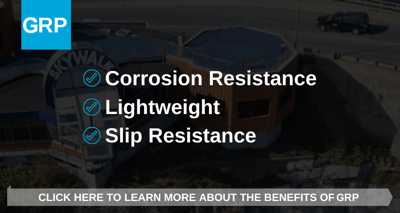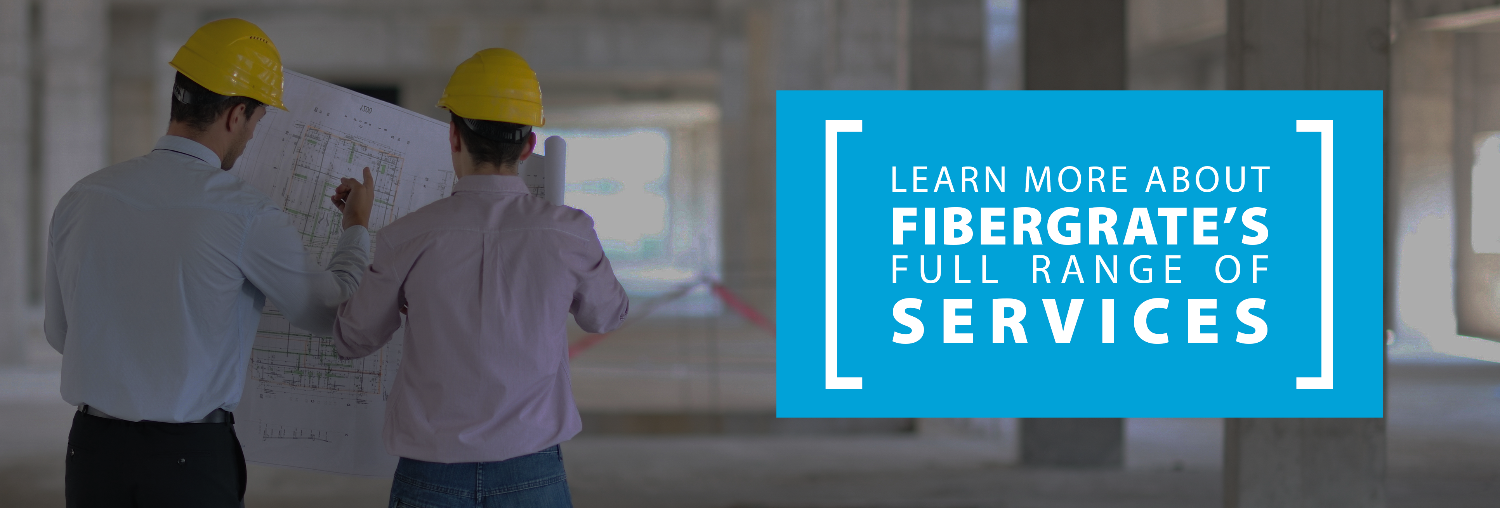Structural grating is a building material that needs to be safe, functional, and durable to support...
A Guide to Glass Reinforced Plastic (GRP) for Structural Grating
Structural grating is a building material that needs to be safe, functional, and durable to support a wide range of industrial applications. Glass reinforced plastic (GRP) serves this purpose well and is a commonly used composite material for strong and lightweight grating.
What Is Glass Reinforced Plastic?
GRP is an advanced composite material made with fibreglass embedded in plastic polymer. It may also have a grit surface made of aggregate material to provide enhanced slip resistance. This composite material exhibits exceptional strength, corrosion resistance, and durability making it a preferred choice in many industrial applications.
GRP has a number of advantages that set it apart from traditional materials like steel or aluminium grating. Its high strength-to-weight ratio makes it lightweight yet resilient. Lower weight means lower transportation costs and easier handling on-site during installation (driving down the overall cost of construction). Because it is corrosion resistant, it does not rust. This feature makes GRP indispensable in corrosive environments like water treatment, chemical plants, offshore drilling, and marine installations.
Common Ways to Use GRP in a Grating Structure
Flooring and Walkways
Structural grating serves as a foundational element in industrial plants, manufacturing facilities, and commercial buildings providing stable and slip-resistant surfaces for workers even in challenging environments.
Stair Treads
Stair treads made of GRP grating are designed to be slip resistant and durable, improving safety in high-foot traffic areas. Staircases can be built entirely from GRP, or stair tread covers can be used to retrofit existing stairways.

Fibergrate's GRP moulded grating stair treads |
Drainage Systems
Incorporated into drainage systems and trench covers, grating allows for the flow of water and debris while providing structural support and preventing accidents.
Ventilation and Air Circulation
Employed in HVAC systems and building facades, structural grating facilitates ventilation and heat dissipation while safeguarding machinery from debris.
Decorative and Architectural Elements
Used in architectural design and interior decor, grating structures can add aesthetic appeal and unique textures to various structures and landscapes.
Marine and Offshore Applications
In marine industries, structural grating is essential for its corrosion resistance and durability on ships, offshore platforms, docks, and ports, enduring harsh marine conditions.
Benefits of GRP in Structural Grating
Even though it is lightweight, GRP is strong and durable for high performance in tough applications. Additionally, GRP's corrosion resistance is a game-changer, particularly in environments prone to rust and degradation from exposure to moisture, saltwater, cleaning agents, and harsh chemicals. Its longevity is further enhanced by the ability to withstand extreme weather conditions, resulting in structures with extended lifespans and reduced maintenance needs.
GRP offers a great deal of flexibility for customization, allowing engineers to design it to meet specific project requirements or for contractors to cut it to fit on-site. This versatility fosters innovation across industries, enabling the creation of custom solutions for a wide range of applications.
The materials used in GRP (polymer resin and fibreglass) are non-conductive to electrical current. This makes GRP suitable for promoting safety in power generation applications and around high-voltage equipment. Additionally, GRP can be engineered to be highly fire-resistant, providing an added layer of safety in fire-rated applications such as building materials and structural components.
Glass Reinforced Plastic Structural Grate Considerations
Factors to consider in specifying GRP structural grating include load requirements, environmental conditions, safety standards, installation methods, and maintenance needs. From assessing load-bearing capacities to adhering to industry regulations, meticulous attention to these factors ensures the optimal performance and longevity of GRP grating systems.
Conclusion
GRP is an advantageous material for structural grating applications, offering high strength, corrosion resistance, and design flexibility. Regardless of your industry, consider exploring the potential of GRP grating and leveraging its unique characteristics to achieve superior performance and sustainability in your projects.


%20for%20Structural%20Grating.png?width=2000&height=339&name=A%20Guide%20to%20Fiberglass%20Reinforced%20Plastic%20(FRP)%20for%20Structural%20Grating.png)

